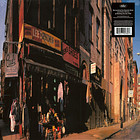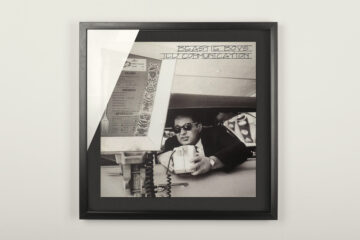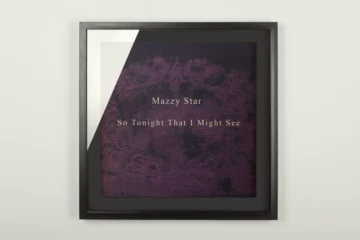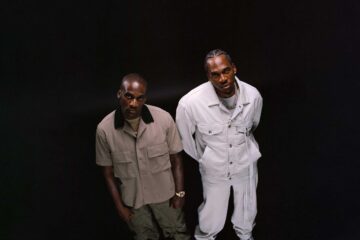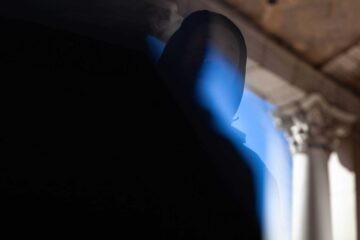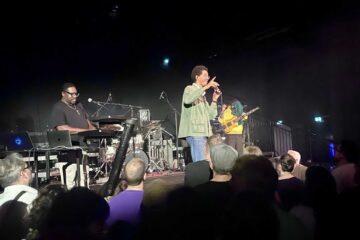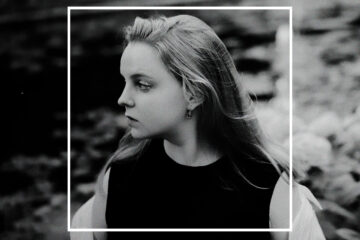High up in the sky, three guys are partying on the roof of the Capitol Records building, below, the label bosses are throwing their up hands in despair. Few days exist like 29/06/1989 that have so poignantly manifested the divide between the music industry and the artist. Upstairs, the Beastie Boys lounge around to gumbo, weed and Dixieland, celebrating the pending release of their second album »Paul’s Boutique« with MTV. A few floors down, the business moguls realise that they have spent a few million US dollars on an album they haven’t even ordered.
In case of doubt, rule in favour of the artist
The bosses’ doubts proved true for the time being: »Paul’s Boutique« was popular with the critics, but sales fell far short of expectations. With »Hey Ladies«, the album yielded just one single – which quickly faded into record nirvana. There was neither a major promotion nor a stadium-filling tour. The 15 videos planned by Adam Yauch aka MCA turned into four, of which only two saw the light of day on release.
»Paul’s Boutique« was not the »Licensed to Ill Pt. 2« for which the strategists on the top floor had embarked on a two-album deal worth $3 million (the equivalent of a $20 million deal today). It was certainly not the hit album with a follow-up to the howl anthem »Fight For Your Right (To Party)«, for which the Beastie Boys had been paid a year’s advance of $750,000, which they knew how to blow according to all the rules of hedonism.
Not to mention what would have become of the three white guys had they not recorded this album. Probably exactly what everyone expected after their frat rap debut: a one hit wonder.
And even if it took ten years: »Paul’s Boutique« was certified double platinum in ’99 with two million copies sold and is now considered by the majority to be one of the greatest, most brilliant and most insane hip-hop albums of all time. Even Chuck D confessed in a 2007 interview with VIBE that the »dirty secret« of this album was that it »had the best beats« at the time. Not to mention what would have become of the three white guys had they not recorded this album. Probably exactly what everyone expected after their frat rap debut: a one hit wonder.
Of victory and the curse of freedom
Capitol Records had learned one thing at least: they left the second album completely to the Beastie Boys. The fact that this automatically put a spanner in the works of their own expectations of a follow-up album to »Licensed To Ill« is another story. However, the last thing the Beastie Boys wanted at this stage was another control freak producer like Rick Rubin who, contrary to reality, had claimed to be the mastermind of »Licensed To Ill« and also claimed total control over other forthcoming projects (which were never realised).
In the end, the bosses at Capitol Records should have known better. A rehash of »Licensed To Ill« was never an option for the Beastie Boys. It was exactly this expectation that made MCA, Ad-Rock and Mike D break with their old label Def Jam. Its CEO Russell Simmons refused to pay the Beastie Boys a good $2 million in royalties in ‘87 in order to blackmail them into immediately following up their debut. »You’re just getting off the roller coaster and your label says, ›OK, here are the tickets for round 2. Give us more of the first‹«, Mike D recalled later in an interview. »And you’re like, ›Wait a minute. I’m dizzy and sick. I need a break and some popcorn first‹«.
How this could all be turned into an innovative and playful album of the likes of »Paul’s Boutique«, wasn’t down to a master plan, but just a few obscure music geeks, myriad illegal substances, extensive cycles of procrastination and 500,000 records.
For the three New York rappers and their new DJ Hurricane, it was both a blessing and a curse. On the upside, they were finally free of Def Jam’s hooks and able to let loose on the west coast. On the downside, the Beastie Boys had no plan about how to go about completely reinventing themselves. They were burnt out, listless, and struggling with full-blown writer’s block. How this could all be turned into an innovative and playful album of the likes of »Paul’s Boutique«, wasn’t down to a master plan, but just a few obscure music geeks, myriad illegal substances, extensive cycles of procrastination and 500,000 records.
Efficiency is something that management does
Because strictly speaking, »Paul’s Boutique« began not with the Beastie Boys, but with Mike Simpson and John King, better known as the Dust Brothers, and their penchant for stacking samples into Jenga towers and synchronising them into several hours of work. Matt Dike, CEO of the newly established Delicious Vinyl Records had heard two tracks by the Dust Brothers during a rather random phone call and after that just screamed hysterically into the handset. That’s how the first Dust Brothers beats ended up on the albums from Tone Loc and Young MC. There were also some complex drafts involved as well. »They were these crazy megamixes with tons of samples and scratches. Most of them were too dense to fit another rapper on them,« recalls Mike Simpson. The Beastie Boys, on the other hand, knew Matt Dike mainly as a main DJ in the Los Angeles underground scene of the ‘80s. They appreciated Dike for making people go nuts with a strange mix of punk rock, hip-hop, metal and obscurities. When Mike D and MCA showed up at Matt Dike’s apartment in ‘88 to get recommendations for the best parties, Dike casually ran two of those Dust Brothers mega-mixes by them: »Full Clout« and »Dust Joint« – now better known as »Shake Your Rump« and »Car Thief.«
For the Beastie Boys, those two tracks sparked where they were headed: eclecticism in all its extreme. And Matt Dikes’ half-million record collection was the perfect source. Currently, we know of 105 (cleared) samples that Matt Dikes found, which the Dust Brothers screwed together in atom-splitting fashion and sound engineer Mario Caldato Jr. then put the right finishing touches to. The Beastie Boys mirrored this massive eclecticism, which according to Dike was pure plagiarism in places, in their lyrics, the narrative pursuits of which were also fed by a plethora of pop culture quotes and references – from Galileo to AC/DC.
When those involved talk about the making of the album, no one can remember the actual, final production phase. For them »Paul’s Boutique« also remains a string of chance encounters, small to large youthful boy pranks and egg-bys (drive-by shootings with raw eggs). Not to mention, the slot machine-filled orchestra hall of the famous Record Plant Studios. Any return-on-investment philistine might still shake his head at that today. But the Beastie Boys were right.


